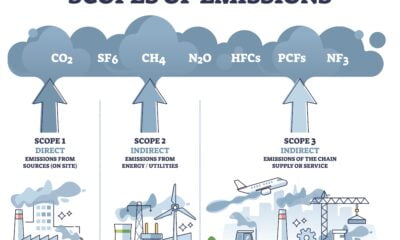

Environment
NASA’s Orbiting Carbon Observatory returns first maps
The fist global maps from NASA’s new Orbiting Carbon Observatory-2 (OCO-2) shows elevated carbon emissions across the southern hemisphere from springtime biomass burning. The results suggest that the observatory is performing well and will offer valuable insights.
The OCO-2 satellite launched in July and measures where carbon dioxide comes from and where it goes. It is hoped that the new tool will help scientists collect important data to mitigate the effects of climate change.
The global map covering the period from October 1 to November 17 2014, shows elevated carbon dioxide concentrations in the Southern hemisphere, particularly above northern Australia, southern Africa and eastern Brazil. This has been linked to seasonal burning of savannas and forests.
NASA adds that the findings from the southern hemisphere could lead to an improved understanding of the relative importance in these regions of photosynthesis in tropical plants, which removes carbon dioxide from the atmosphere, and biomass burning, which releases carbon dioxide to the atmosphere.
The organisation states that the early OCO-2 data hints at some potential surprises to come. Christopher O’Dell, an assistant professor at CSU and a member of the OCO-2’s science team, commented, “The agreement between OCO-2 and models based on existing carbon dioxide data is remarkably good, but there are some differences.
“Some of the differences may be due to systematic errors in our measurements, and we are currently in the process of nailing these down. But some of the differences are likely due to gaps in our current knowledge of carbon sources in certain regions- gaps that OCO-2 will help fill in.”
Photo: Neil Palmer (CIAT) via Flickr
Further reading:
NASA probe to study world’s forests and carbon cycle
NASA: August hottest on record worldwide
Amazon rainforest inhales more carbon than it emits, NASA study finds
NASA study links climate change with Amazon degradation
Nasa satellite to measure Earth’s carbon ‘like a plane observing smoke from forest fires’































